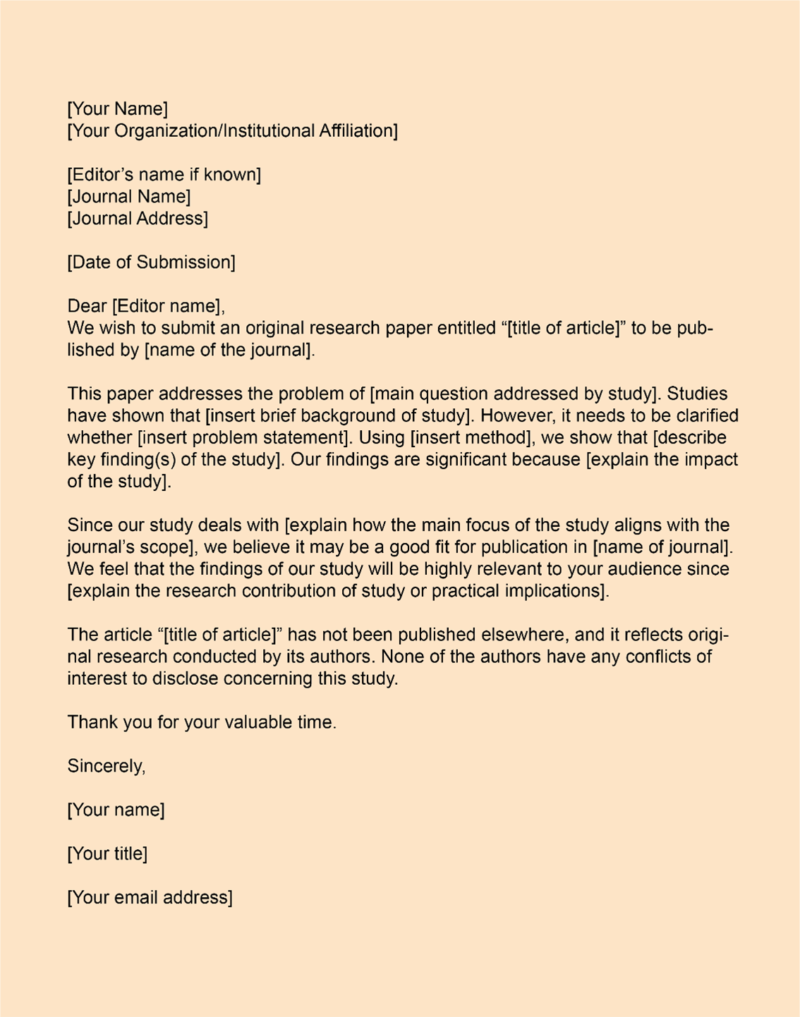Table of Contents
A cover letter is often the first thing an editor reads when reviewing your submission. As your first pitch to the editor, the cover letter helps them gauge the suitability of your manuscript for publication in their journal. Imagine your work shaping the future of your field, gathering citations, and sparking discussions. A powerful cover letter is thus the first step to making that vision into a reality.
In this article, we will guide you through the process of writing an effective cover letter and explain how you can get it right every time with examples. First, let us get started with the basics!
Getting the Basics Right
When writing a cover letter, it is crucial to address the editor by their correct and complete name¹. If there are multiple co-editors, you can address your letter to the right person, based on their specialization or designated responsibilities. If unsure, it is okay to go with a more general salutation, such as “Dear Editors”¹.
Presenting your Research
Provide a clear and concise title for your submission and specify whether it is an article, communication, review, perspective, or a manuscript belonging to some other category. If the journal guideline recommends, consider including a list of all authors in the manuscript.
After covering the preliminary information, briefly explain your paper’s central theme or focus to give the editor an idea of its contents. Ensure this stays a brief outline, without going into too much detail.
Conveying the Importance of Your Work
How you communicate the impact of your work can make or break your cover letter. To make a strong impression on the editor, articulate the significance of your research clearly, emphasizing its relevance to the field. Additionally, show how your work aligns with the journal’s scope and mission.
Including a Formal Declaration
Some journals require a set of declarations from you to ensure that your manuscript adheres to its ethical code and the larger ethical standards of scientific publishing. Here are the required declarations in a cover letter:
- Originality of work:
- Confirm that your work is original and has not been published elsewhere. This tells the editor your research is unique.
- Conflict of interest statement:
- Be clear about any potential conflicts of interest. This includes any personal, financial, or professional connections that might affect your research.
- Funding source (if applicable):
- Tell where your research funding came from, if any. This includes any support or grants from organizations.
Including Personal Suggestions for Reviewers on a Separate Page (optional)
If there is no part of the submission process that collects researcher suggestions for reviewers, and there are special requests from the researcher for reviewers (e.g., recommending the inclusion or suggesting the exclusion of a specific reviewer, etc.), you may also make a note about this in the cover letter.
Combining these five points, here is a good example of a cover letter for researchers’ reference:

(This image is intended to demonstrate the norms of formatting and tone of expression in a cover letter, it is to be used only by the researcher as a reference in writing².)
Conclusion
A strong cover letter can go a long way in ensuring success for researchers looking to publish their manuscripts! Your cover letter is the opening act, setting the stage for how editors perceive your manuscript. So, look at it not as just another formality but as a crucial opportunity to make a strong impression.
Understanding what to include, what is optional, and what is best left unsaid can be tricky. That is where our team of experts at Elsevier Language Services can step in. We will provide personalized recommendations and expert guidance to help you craft a cover letter that perfectly complements your manuscript. Reach out to us today to make a great first impression and embark on a successful academic journey!
Reference
- Nicholas, D. (2019). How to choose a journal and write a cover letter. Saudi Journal of Anaesthesia, 13(5), 35. https://doi.org/10.4103/sja.sja_691_18
- Loyola University Chicago. (n.d.). JCSHESA Sample Cover Letter. https://ecommons.luc.edu/jcshesa/cover_letter_template.pdf













